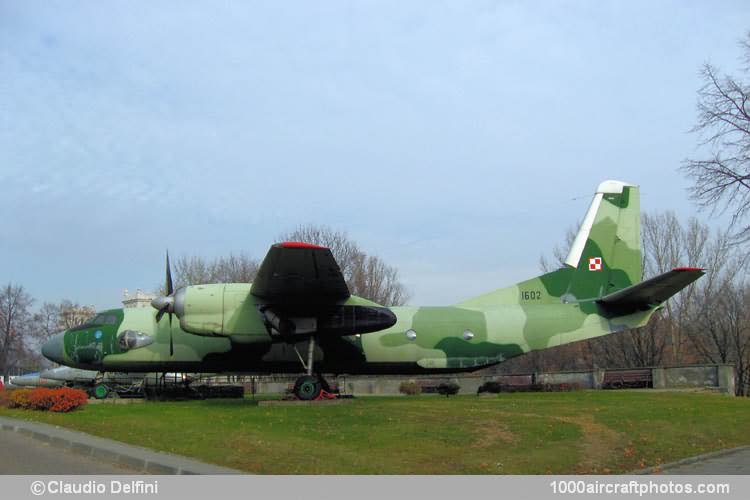01/31/2011. Remarks by Johan Visschedijk: "First displayed in public at the 1969 Paris Air Show, this dedicated cargo derivative of An-24 was first Soviet aircraft to have pressurized cargo hold, with full-section rear door. It also introduced a novel door, patented by Antonov himself, which in addition to hinging down as a ramp can also be swung down on two beams and two parallel links to lie just below rear fuselage. Second position is for loading from trucks or for air-dropping. Door operation is hydraulic, if necessary by hand pump which also builds up pressure in main system.
Standard role equipment includes 4,409 lb (2,000 kg) electric hoist, 9,921 lb (4,500 kg) freight handling system flush with floor, 38 or 40 tip-up seats along walls, and retractable static lines for paratroops or cargo. Cargo hold is convertible for 24 stretchers. Underside of rear fuselage sweeps sharply up to tail plane, but side profile is masked by deep glass fiber strakes on each side. Smaller strakes project along each side where door is suspended in air-drop position. Most An-26s have bulged observation blister on left side of flight deck for contact navigation and precision drop guidance.
Standard engines are two 2,820 ehp Ivchenko AI-24VT turboprop engines, with an auxiliary 1,765 lb (800 kg) st RU-19A-300 turbojet in the starboard engine nacelle.
The improved An-26B version emerged in 1981. Equipped to carry three standard freight pallets, each 8 ft (2.44 m) long, 4 ft 9.5 in (1.46 m) wide and 5 ft 3 in (1.60 m) high, with a total weight of 12,125 lb (5,500 kg). Rollgangs on floor, mechanism to move the pallets, and moorings, enable two men to load and unload all three pallets in 30 min. Rollgangs can be stowed against sides of cabin when not required. Although intended primarily for cargo carrying, the An-26 can be adapted easily for passenger, ambulance or paratroop transport duties.
Before switching to the An-32 in 1983, the factory at Kiev built 1,398 An-26s of all versions, just over half for military operators, including at least 27 foreign air forces. Civil operators include Aeroflot (over 215), and Afghanistan, China, Cuba, Mongolia, Nicaragua, Romania, Syria, Vietnam and Yemen. The Chinese company Xian produced the Y7H-500 derivate."
